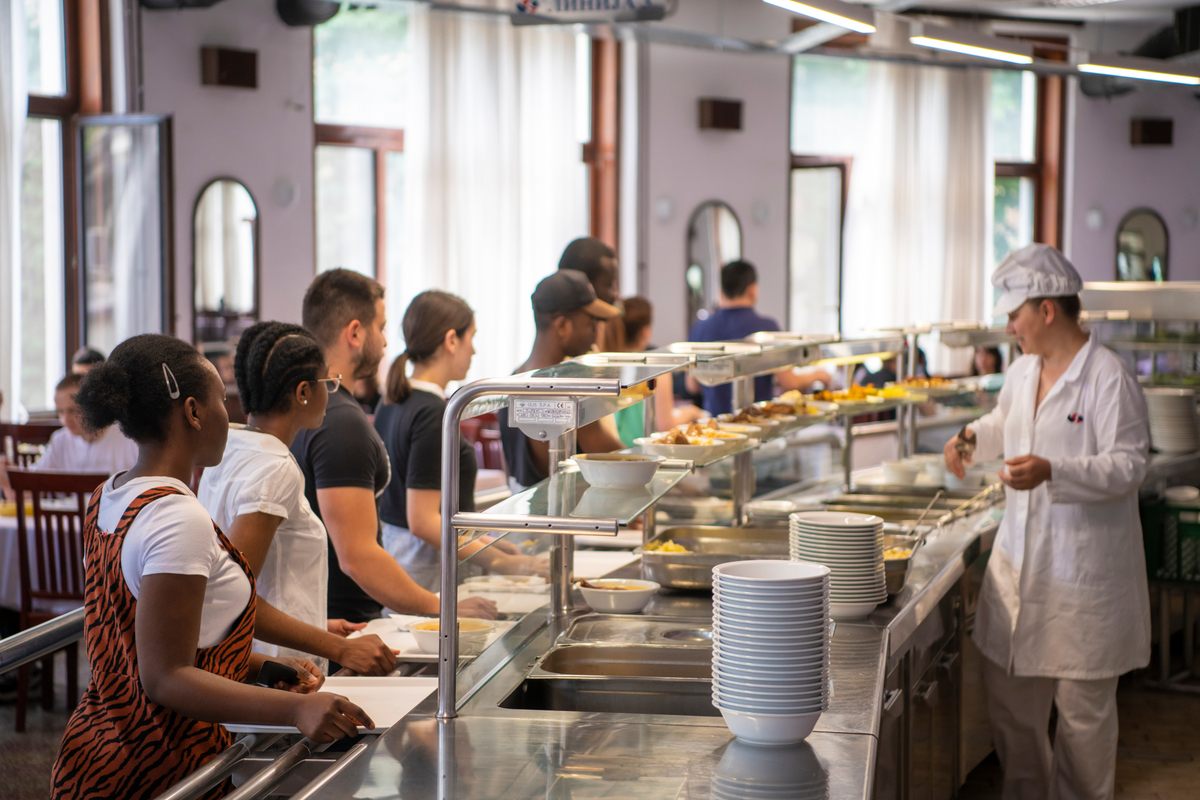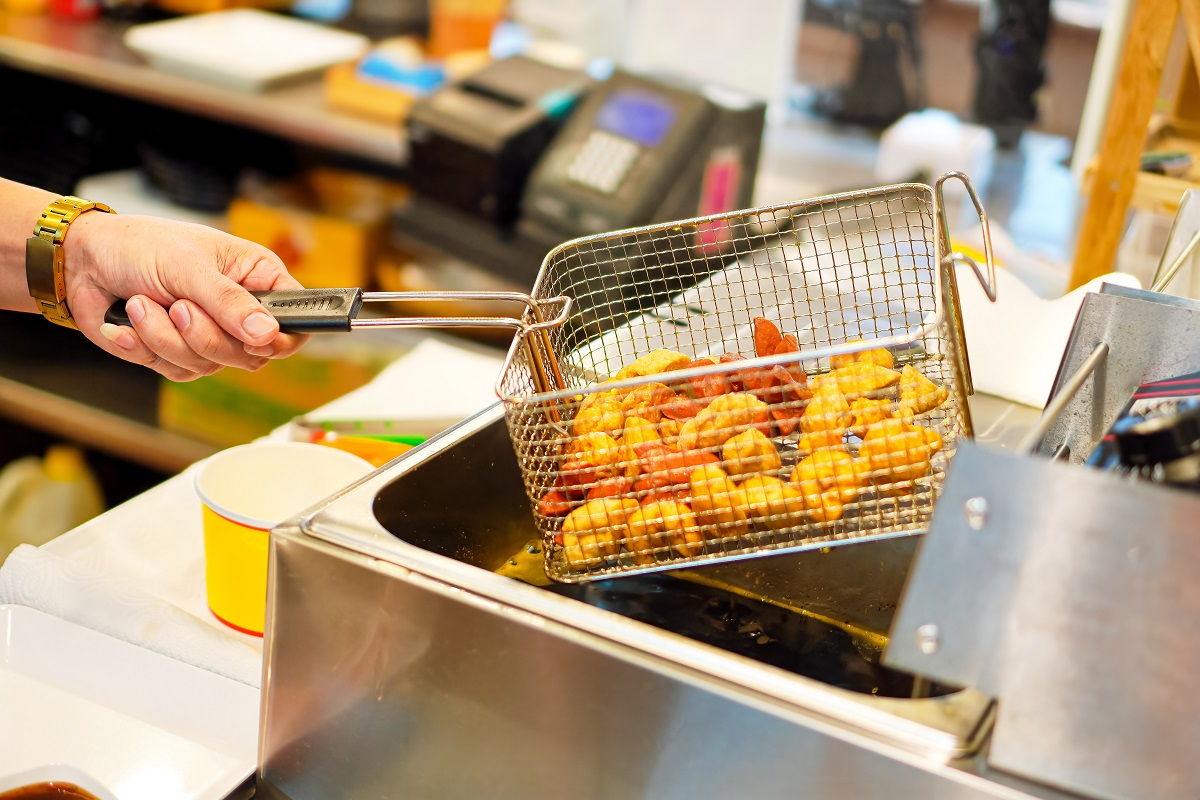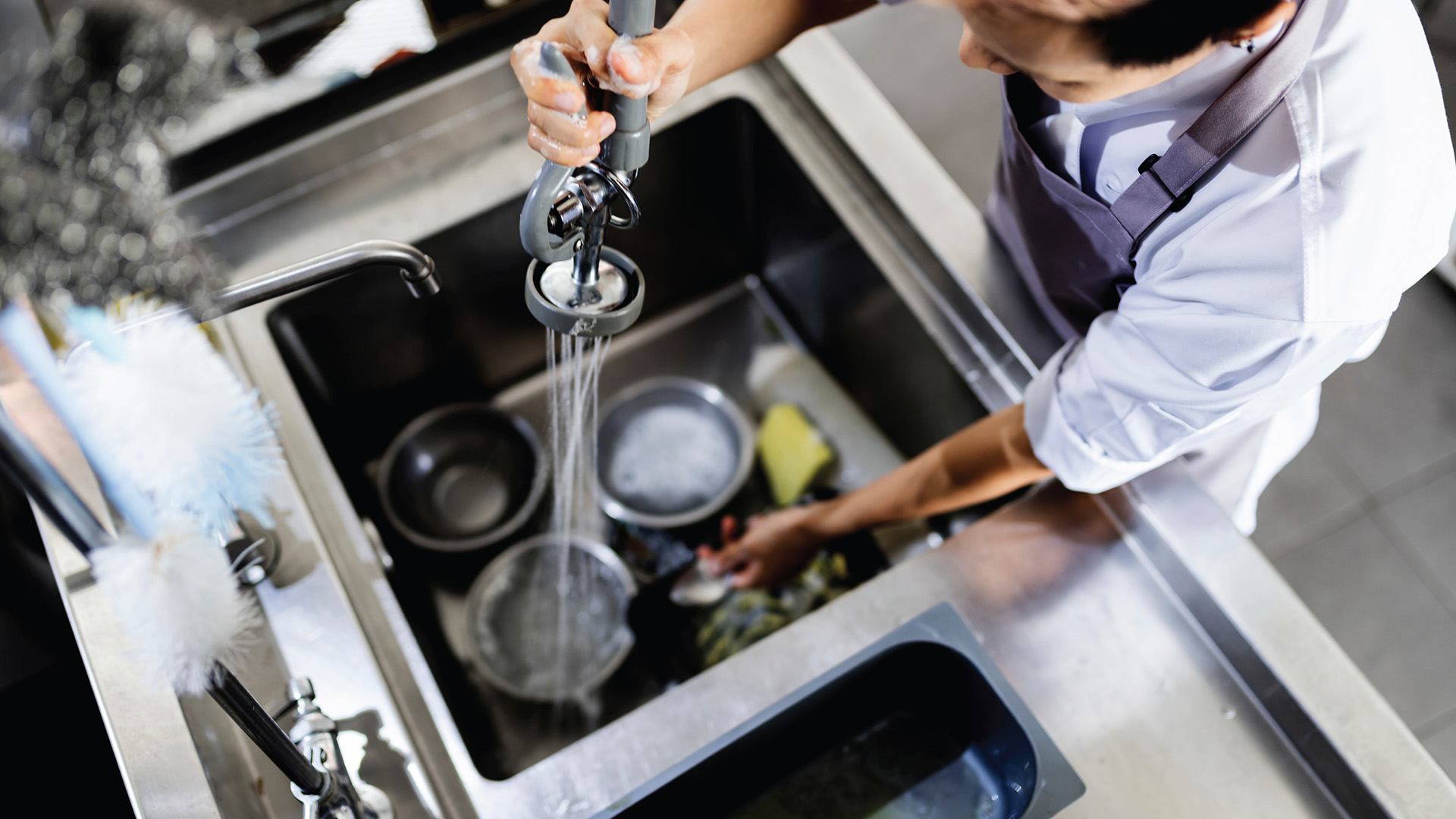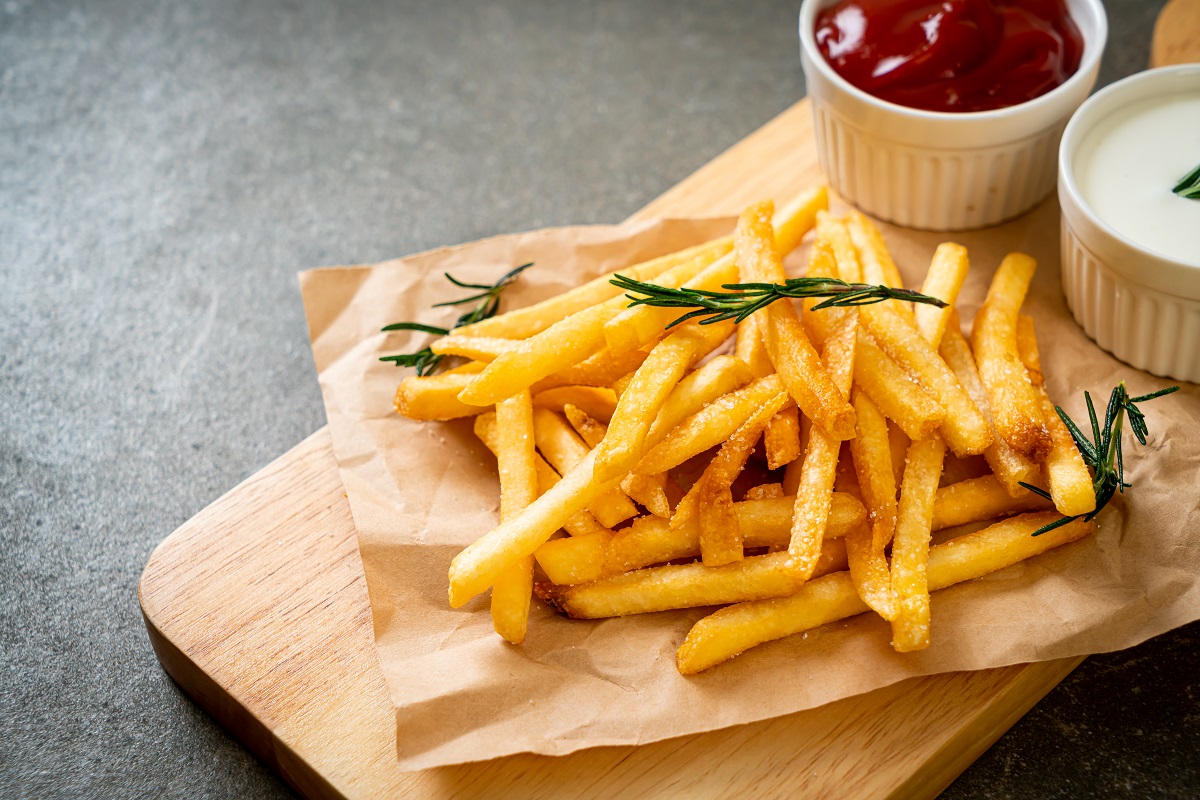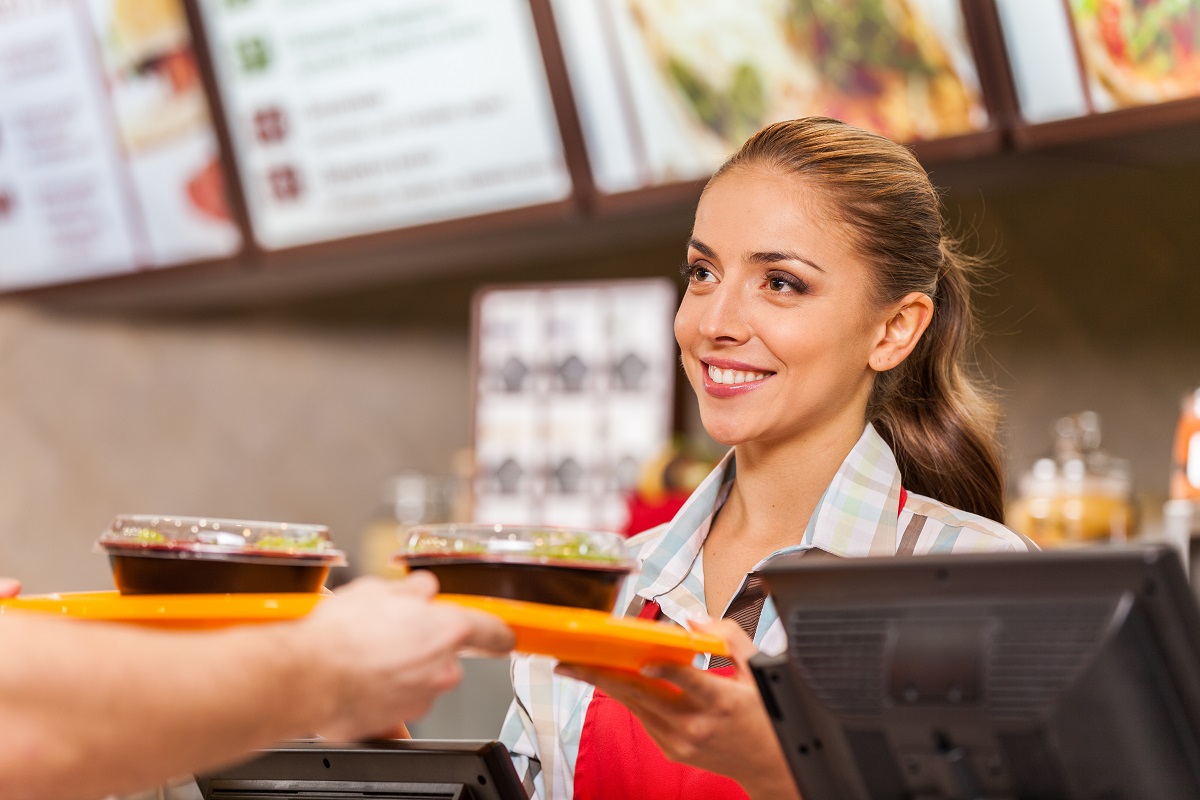Imagine some of your fondest memories of joining others across a table—a bustling cafeteria might immediately spring to mind. Whether it was sharing laughter with pals in grade school or bonding with coworkers, cafeterias have long been synonymous with camaraderie and connection.
But running a cafeteria is an entirely different thing than dining in one. From making sure your staff follows proper food handling protocols to guaranteeing that your back-of-house operations go as smoothly as possible, overseeing a cafeteria can be as demanding as managing a successful restaurant operation—only at a larger scale.
Luckily, we have the intel you need to simplify and improve your operations. Dive into our comprehensive guide on how to run a cafeteria and how you can ultimately make excellent memories for others.
Cafeteria Management 101
Quality and efficiency are two of the top priorities when it comes to running a successful restaurant or cafeteria. Not only are you responsible for providing typically large groups of people with fast, delicious meals, but you’re also often tasked with doing so at one time. (Just think of the pandemonium that can possibly occur in school cafeterias—a topic we’ll look at below.)
With this in mind, it’s vital to set up operations that will make for smooth sailing and satisfy your guests. This may include:
- Tracking your cafeteria lines – Diners in any venue expect quick, efficient food service. Speed is even more important in cafeterias, whether yours is located in a school, hospital, or airport. Long, unruly lines can cause delays and lead to impatience for the people you’re trying to feed (and frustration for your employees). To this end, consider the layout of your cafeteria to ensure it can accommodate a smooth flow of traffic from the moment your diners step into the second they step out.1
- Automating cooking oil management – According to older research, cafeterias may use up to 30 liters of cooking oil per day.2 If your cafeteria is still relying on manual labor to handle this cafeteria staple, consider upgrading to an automated cooking oil system. Used throughout commercial kitchens, these solutions store, deliver, monitor, filter, and remove used cooking oil—all at a fraction of the time it may take your back-of-house staff and without the hassle.
- Offering advanced checkout options – Do you run a school cafeteria? You may not need to deal with younger students checking out. But higher education, hospital staff, and employee cafeterias may benefit enormously from offering diners prepaid checkout options and self-checkout kiosks. In doing so, you’ll cut down on the tasks your staff is responsible for and expedite the whole process for your guests.
As for the ideal menu items? Keep reading.
Designing Your Cafeteria’s Menu: Understand Your Audience
The layout, atmosphere, and even the dining times you offer should hinge on your target audience. And yet, few things are more important in a cafeteria setting than crafting a menu that will nourish and delight the people you serve.
Meaning, of course, that it’s vital to understand your target audience.
To gain a clearer picture of your primary potential customers, consider their3:
- Age
- Dietary restrictions
- Food preferences
- Income level (for non-school cafeterias, or if you offer food for purchase)
Additionally, consider the wide range of people you might be serving. This may call for bringing greater diversity to your menu items while still satisfying your diners’ nutritional needs. On this point, bear in mind that schools are also legally required to comply with the standards set forth under the Healthy, Hungry-Free Kids Act of 2010 (HHKA), which include sodium and sugar limitations.4
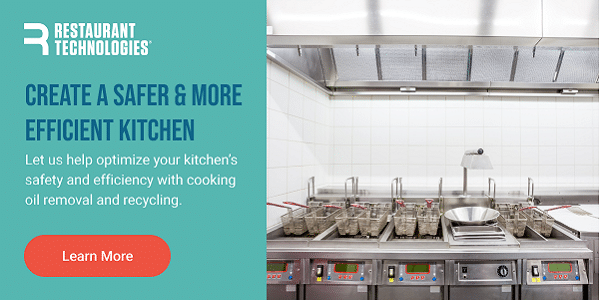
Essential Equipment for Efficient Operations
Delivering food at scale also calls for making sure your kitchen has precisely what it needs to succeed.
While the exact equipment you might require may depend on the number of people you generally see per day (and the type of food you serve), most commercial kitchens need5:
- Ranges and ventilation
- Ovens, including convection, combination, and conveyor ovens
- Food processors
- Slicers
- Mixers
- Coffee brewers
- Refrigerators and freezers
- Shelving and storage racks
- Utensils
- Cutting boards
- Food prep counters
Lastly, consider the value of adding technology to your back-of-house restaurant operations. Automated hood and flue cleaning, for one, can help keep your equipment sanitized and running smoothly, all while enhancing the safety of your kitchen. Technology and automation are revolutionizing cafeteria operations. From self-service kiosks to automated solutions for universities, embracing innovation is key to staying competitive.
How Do You Manage a School Cafeteria?
Happen to arrive at this article while searching specifically for advice on running a school cafeteria? First, a round of applause for tackling such a necessary job.
Now, onto the logistics of your cafeteria business plan.
In addition to having the essentials in place—namely, your staff, menu, and kitchen equipment—you might also benefit from these top tips on successful management6:
- Make sure the layout of your kitchen optimizes workflow so that your employees can move with ease between workstations and your cafeteria’s main counter(s)
- Decrease food costs and waste by advising your staff on portion control and encouraging students to make honest decisions about how much they’ll truly eat7
- Provide older students the option to pre-order their meal choices through a website or app
- Implement different meal times to prevent congestion
- Establish cafeteria rules to help ensure order (and just as you would in the classroom)
- Request feedback from students and administrative staff members alike
- Give each of your team members clearly defined tasks to improve operational efficiency
- Create a recycling and composting program to bolster your cafeteria’s sustainability efforts
Further, you may want to think about the perks of the following techniques.
Automating Inventory Management
Inventory management software can be a huge boon for school (and other) cafeterias, particularly if you’re overseeing operations at a large establishment. Such software allows you to8:
- Track food prices
- Monitor the food you have in supply
- Create menus according to the food you have in stock, such as fresh fruits and vegetables
- Avoid food spoilage and reduce food costs
Implementing Food Safety and Hygiene Protocols During Staff Training
Staff training and safety is fundamental no matter the dining venue, but it takes on next-level importance in school cafeterias. Not only should this include training your staff on best practices for fire safety and establishing an effective injury and illness program, but it also ought to involve putting the following into place9:
- Robust hygiene standards – Foodborne illnesses are crucial to prevent, especially as schools are prime places for outbreaks.10 Establishing strict hygiene rules, such as making sure your staff wears protective gloves and hairnets and regularly washes their hands, will help you maintain a clean and safe environment.
- Routine food safety training – Ongoing education on food safety is central to remaining in compliance with the latest regulations. Workshops, seminars, and meetings can help you accomplish this.
- Proper food handling and storage – Appropriate food handling and storage is just as necessary to uphold the well-being of your team members and students; it’s also critical to adhere to regulations. This includes training your cafeteria staff on proper cooking temperatures and establishing rigorous storing procedures for non-perishable items.
- Ongoing cafeteria inspections – According to the National School Act, school cafeterias must get at least two food safety inspections by a state or government official per year.11This assures students, parents, and the public that you’re following the standards outlined above, yes, but it can also assure you that you’re doing all that you can to guarantee the wellness of those you work with and serve.
The Role of Technology in Cafeteria Management
Technological strides have transformed how to run a cafeteria well, and the automated hood and flue cleaning and automated inventory management mentioned above are only two parts of the whole package. In addition, technology can help you12,13:
- Manage staff schedules
- Communicate internally with your staff
- Plan meals
- Feature menus online
- Collect and process payments
- Gain insights into your spending and remain on budget
And remember the amount of cooking oil cafeterias usually go through? Technology has the power to assist in this regard too with automated cooking oil management.
Benefits of Automated Cooking Oil Management
Manually managing cooking oil isn’t just a hassle: it can also be a safety hazard. Automating the process can add an extra layer of safety to your cafeteria while further:
- Curbing demands on staff
- Decreasing costs
- Boosting cleanliness
- Enriching sustainability by reducing waste in landfills
Above all, automated cooking oil management may improve food quality—which, in the end, is precisely what cafeterias are all about. Well, that, and the camaraderie and connection they also offer.
Elevate Your Cafeteria with Restaurant Technologies
From schools to hospitals, cafeterias can be a refuge for students, employees, and visitors alike. And while there’s plenty to adore about running an efficient cafeteria that pleases its diners, it may also come with a seemingly endless number of tasks.
Restaurant Technologies is here to take several off your to-do list. We offer organizations like yours an array of solutions, automated hood cleaning, bulk oil delivery, and automated cooking oil management.
Simplify your role with Restaurant Technologies, and watch your cafeteria business plan thrive as a result.
To discover more about enhancing your cafeteria operations, explore our insights on preventing used cooking oil theft, understand how much used cooking oil is worth, and learn if you can recycle oil bottles and containers. Each guide offers valuable tips to further optimize your cafeteria management.
Sources:
- Toast. How to design a cafe floor plan, layout and blueprint. https://pos.toasttab.com/blog/on-the-line/cafe-floor-plans
- Article Journal. Cooking oil management in cafeteria operations. https://www.articjou.com/2016/01/cooking-oil-management-in-cafeteria.html
- Triple Seat. 11 restaurant menu design tips to optimize your menu. https://www.rti-inc.com/industries/qsr-fast-casual
- School Nutrition Association. School nutrition standards. https://schoolnutrition.org/about-school-meals/school-nutrition-standards
- Toast. Essential restaurant kitchen equipment: the ultimate checklist. https://pos.toasttab.com/blog/on-the-line/restaurant-equipment
- Incentivio. Mastering the rush hour: essential strategies for smooth restaurant operations. https://www.incentivio.com/blog-news-restaurant-industry/mastering-the-rush-hour-essential-strategies-for-smooth-restaurant-operations
- Boonli. Efficient cafeteria management: 5 best practices for school cafeterias. https://boonli.com/blog/cafeteria-management
- Booking Ninjas. The importance of inventory management. https://www.bookingninjas.com/blog/4-reasons-why-restaurant-inventory-management-matters
- Cook’s Direct. Food safety in school cafeterias: ensuring a healthy dining environment. https://www.cooksdirect.com/food-safety-in-school-cafeterias-ensuring-a-healthy-dining-environment
- Pediatrics. Childcare and school acute gastroenteritis outbreaks: 2009–2020. https://www.ncbi.nlm.nih.gov/pmc/articles/PMC10061552
- USDA Food and Nutrition Service. Taking action to build food-safe schools. https://www.fns.usda.gov/fs/taking-action-build-food-safe-schools
- Linq. The role of technology in the future of K-12 food service. https://www.linq.com/blog/role-technology-k12-food-service
- Perfect Venue. How to find the right restaurant staffing software. https://www.perfectvenue.com/post/restaurant-staffing-software
